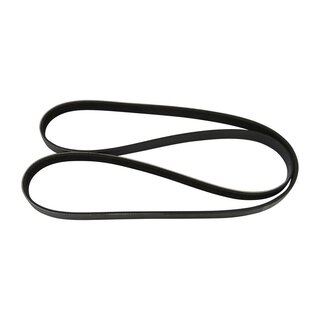A v-belt is an adaptable machine component used to communicate power between a bunch of furrowed pulleys or piles. They are described as belts having a trapezium cross-segment. V-belts are the most generally utilized belt drives since their calculation makes them wedge firmly into the section as the pressure is expanded. As the correas trapeciales wedges into the section, grinding between the outer layer of the belt is expanded, permitting high forces to be communicated.
The expanded rubbing limits the deficiency of force through slippage. Before going further into v-belts, it is vital to know an outline of belt drives. Belt drives are machine components that are utilized to communicate power between at least two turning shafts, generally with equal tomahawks of revolution. The correas trapeciales are circled over pulleys appended to the driver and adherent shafts. These pulleys are set at a specific distance to make an underlying pressure on the belt. When inactivity, the erosion makes the belt grasp onto the pulley.
The turn of the driver pulley expands the strain on one side of the belt making a tight side. This tight side applies an unrelated power to the adherent pulley. Force is then applied to the determined shaft. Inverse the right side is the leeway side where the belt encounters less pressure. There are many kinds of belt drives utilized today. The earliest kind of belt drive utilizes a level belt produced using cowhide or texture. Level belts work sufficiently in low-power applications like ranch gear, mining, and logging.

At higher loads and velocities, they will generally slip on the outer layer of the pulleys and move out of the pulley. One more early kind of belt drive is a rope drive produced using cotton or hemp. Rope drives are utilized on two pulleys with a V-moulded groove. This tackled the issue of moving out of the pulley empowering belt drives to be utilized over huge distances. Afterward, this was formed into round belts which are produced using elastomeric materials like elastic, nylon, or urethane. The improvement of these elastomeric materials additionally brought the advancement of belt drive innovation.
Belts like v-belts, ribbed belts, multi-groove belts, and timing belts were made to tackle the issues of past belt drives. Since belt drives depend on rubbing to keep up with coupling with the driver and supporter pulleys, stuns and over-burdening can be dispersed by permitting the belt and pulley surfaces to slip from each other. This keeps exorbitantly high forces from being communicated to driven parts forestalling harm to the machine. Belt drives do not react, except crankshaft belts. The surfaces of the belt and pulleys contact effectively during activity.

